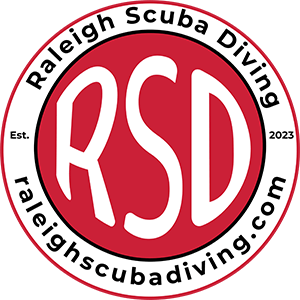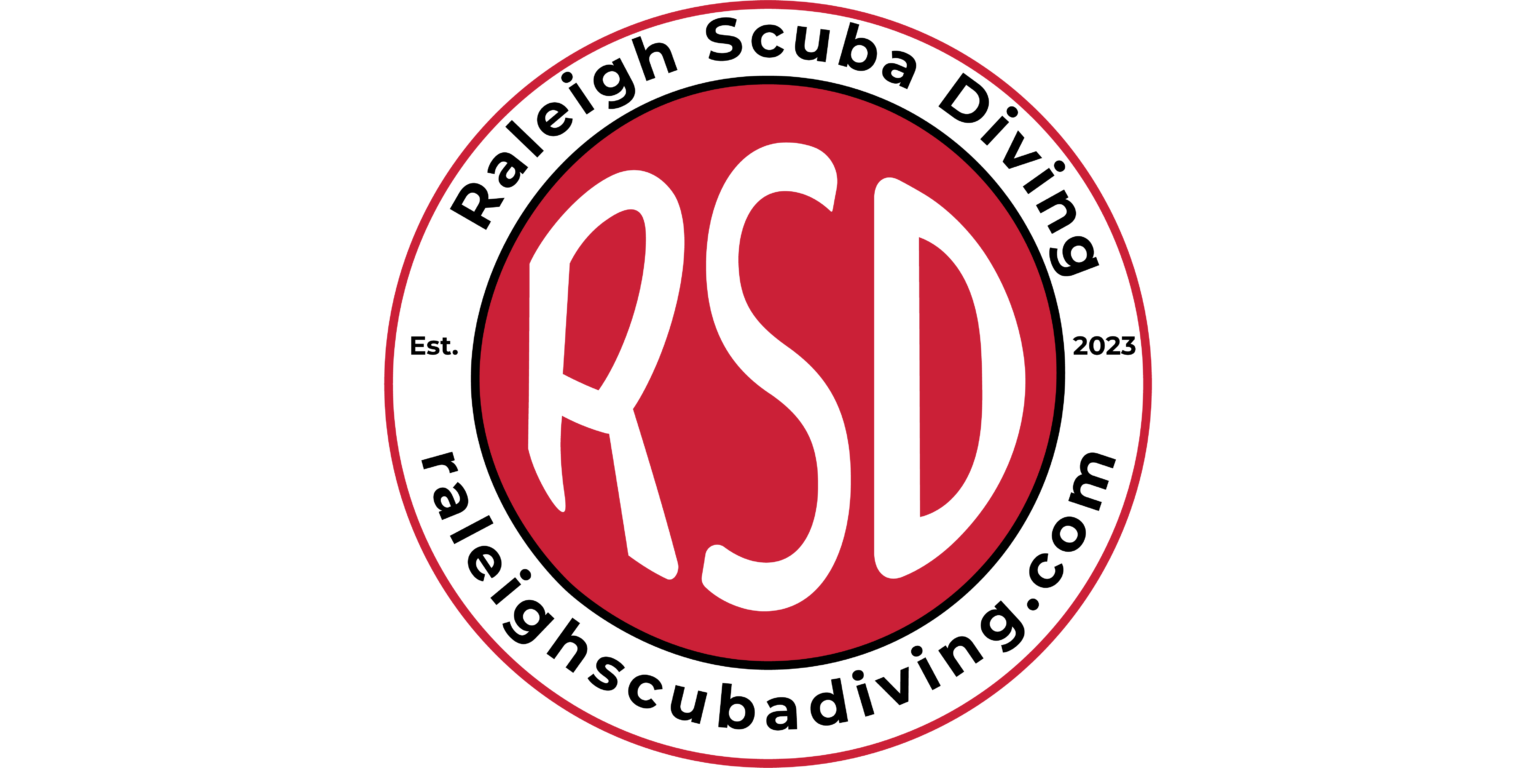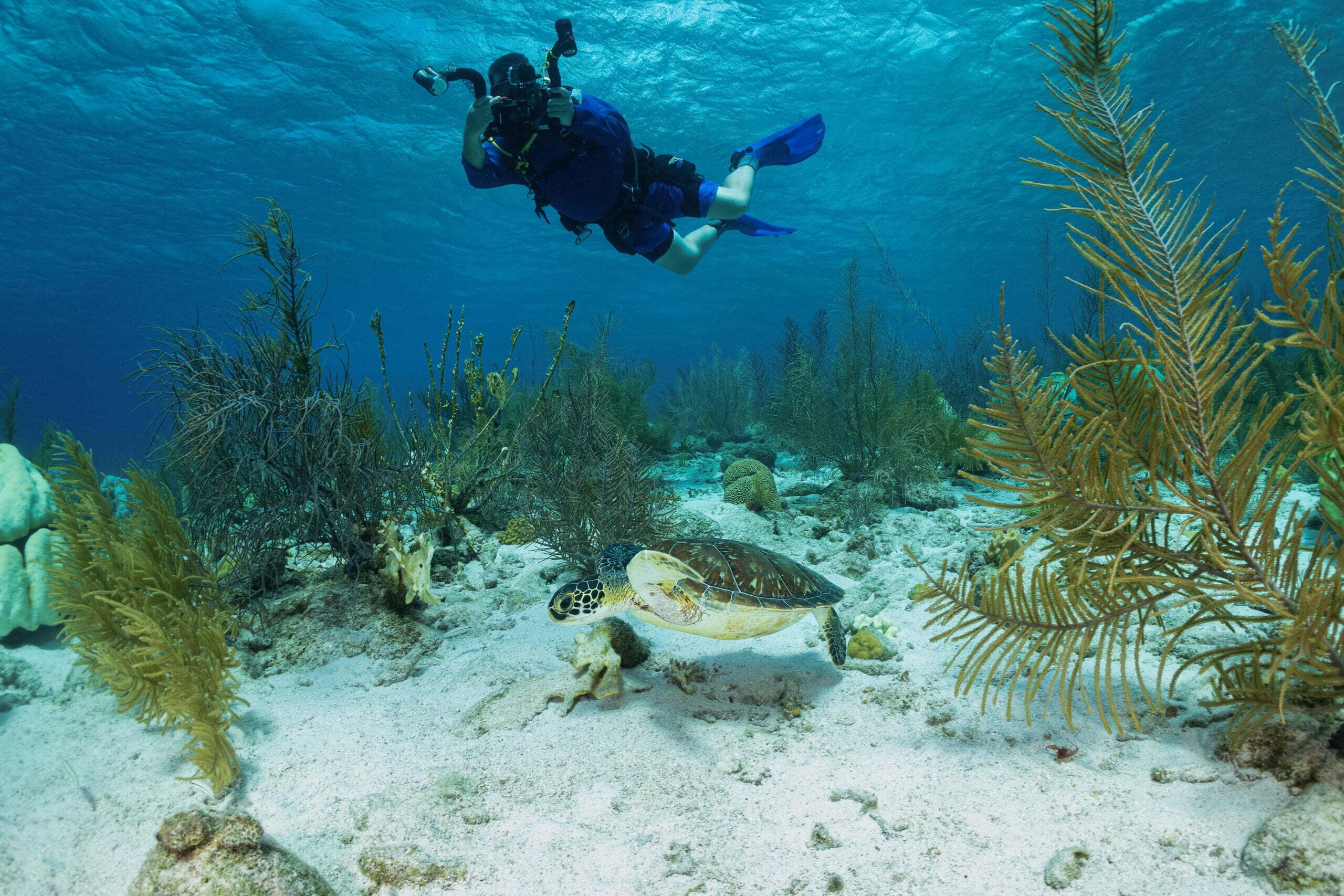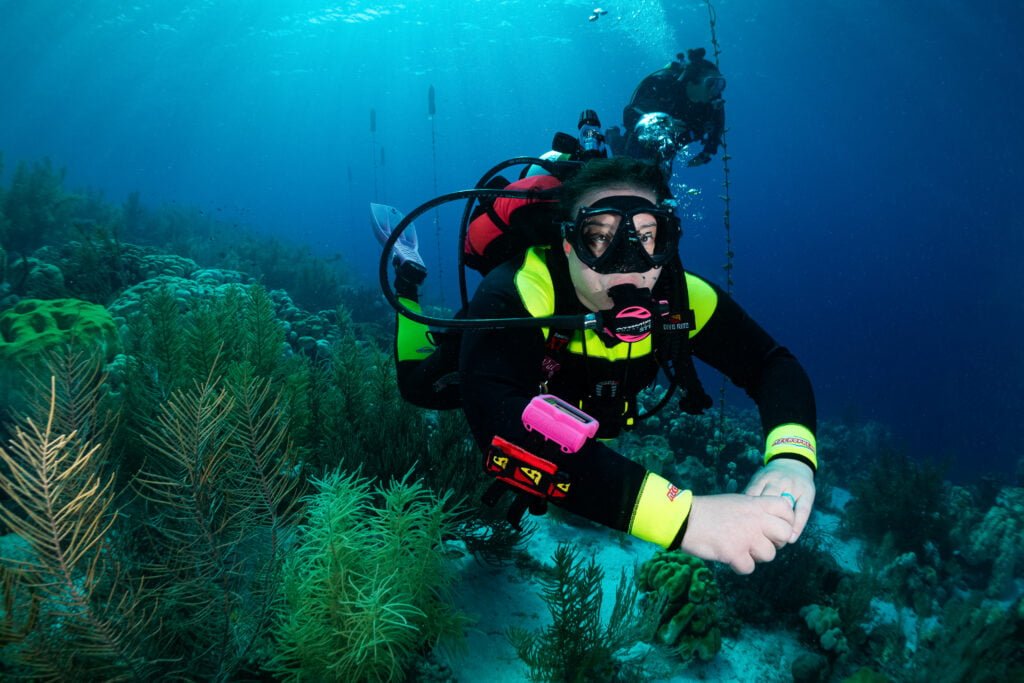
One of the most challenging, but also one of the most satisfying skills to master in diving is buoyancy. It’s a skill that requires some thought at first, but after a while it becomes as natural as breathing on the surface. We’ll review what Buoyancy is and what Trim is, as well as how they interact with each other. We’ll also look at some tips to help improve both Buoyancy and Trim so you’ll be diving like a pro in no time.
What is Buoyancy?
Many divers think of buoyancy as a person’s ability to float in water, and this is technically incorrect. Buoyancy is actually the upward force exerted on the diver by the water (or any other fluid) that pushes them back to the surface. Archimedes defined this force as being equal to the weight of the water (or other fluid) that is displaced by the diver. The more water that they displace, the more water weight that is moved around, which increases the upward force that is buoyancy. Put simply, the more water a diver displaces, the harder the water pushes them back upwards.
The density of the water a diver is in also contributes to buoyancy. The denser the water is, the heavier it is. Salt water for example, is more dense than fresh water, so 1 gallon of saltwater weighs more than 1 gallon of fresh water. A diver may displace the same volume of salt and fresh water, but if they are in saltwater, the weight of the displaced water will be greater than the weight of the displaced fresh water. As Archimedes observed, the more water weight that is displaced by a diver, the greater the buoyancy force that is exerted on them. Divers need more weight in saltwater because as they displace the increased water weight, and they experience the greater buoyancy force.
So, what exactly do we as divers do to overcome and control this force?
When divers want to sink (descend) they vent most if not all the air out of their BCD. By dumping this air, the diver DECREASES the amount of water they displace. By decreasing the displacement, the buoyancy force is also decreased (Archimedes Principle). The result is the diver’s weight becoming GREATER THAN the buoyancy force, leading them to overcome it and descend. This is called being NEGATIVELY buoyant.
When divers want to rise (ascend) they add air to their BCD by swimming upward. This INCREASES the amount of water they displace. By increasing the displacement, the buoyancy force is also increased (again, good old Archimedes). The result is the diver’s weight becoming LESS THAN the buoyancy force leading them to ascend as the greater force pushes them upwards. This is called POSITIVE buoyancy.
As divers we tend to strive for NEUTRAL BUOYANCY, that is, we don’t want to ascend or descend, but stay in the same place in the water column. We achieve Neutral Buoyancy when the diver’s weight is equal to the buoyancy force of the water. To become neutrally buoyant, divers add small amounts of air to their BCD until the water weight they are displacing is equal to their own weight. Since the buoyancy force pushing the diver upwards is equal to the force of the diver’s weight pulling them down, the result is they neither ascend nor descend in the water column. They are neutrally buoyant.
What is Trim?
When divers talk about Trim, they are referring to their physical orientation while underwater. Good trim in diving means staying as horizontal as possible. Being horizontal is the most efficient position primarily because it reduces drag when diving. The less drag you experience, the less energy they use when they are diving. Remember, diving is a lazy sport and the less energy that’s used, the less gas breathed, so divers can spend that much more time enjoying themselves underwater. Being horizontal makes it easier to maintain the same depth. It also makes it easier to avoid stirring up a silty bottom or damaging coral reefs.
A subtopic of trim is keeping scuba gear streamlined. Having an SPG or an octo regulator dangling in the water is a good way to increase drag and, more importantly, it’s an entanglement hazard. You don’t want to get an expensive piece of gear stuck in some rocks and damage it. You also don’t want a giant clam chomping down on it (yes, this has happened!). Streamlining scuba gear means securing it closely to themselves so it is easily accessible and does not dangle freely.
How Buoyancy and Trim affect each other.
To float like a turtle and sting like a jelly, a diver has to understand how buoyancy and trim affect each other and master them underwater. As we previously discussed, buoyancy is a constant, upward force that pushes divers towards the surface. When divers maintain good Trim, this force pushes against their horizontal profile. This turns divers into human, underwater see-saws. Just like a see-saw tilts one way or another when there is imbalanced weight on it, so too will a diver tilt and roll when the weight of their gear is not properly balanced around them.
There is a lot of stuff strapped and clipped to a diver from head to toe before they jump into the water: mask, tank, regulators, SPGs, BCD, computers, weights, lights, cameras, fins, and more! All that gear has its own weight, and that weight is spread out across their bodies. If gear is not positioned correctly or right for the diver, the buoyancy force of the water can orient them head up too high, head down too low, or even cause a diver to roll to one side. For example, if a diver has 5 lbs in their left pocket, but only 1lb in their right, then they are likely going to be rolling to their left and swimming like a mola mola fish. (A large ocean fish that looks like a giant pancake swimming vertically… it’s a little different, check it out.) If a diver is holding a camera that is positively buoyant (floats), it might pull them head up too much. Many divers prefer neutral, or negatively buoyant cameras to help them maintain good trim. At the end of the day, if a diver is fighting the buoyancy force and struggling to maintain good trim, they are exerting a lot of energy, breathing more gas, and the dive isn’t much fun anymore.
Improving Your Buoyancy and Trim
The secret to effortless buoyancy control and maintaining good trim all comes down to breath control and properly distributing the weight of the gear around the center of buoyancy. The center of buoyancy is where the upward force of buoyancy acts most on a diver.
BREATHING
Divers breath slowly and deeply underwater. But just as adding air to a BCD will make a diver rise to the surface, so does filling the lungs with air. Conversely, when a diver exhales most of the air in their lungs, they will descend as if they vented air out of their BCD.
Divers use their BCD to primarily establish neutral buoyancy at a given depth. If they need to move up or down a few feet in the water column, they regulate the volume of air in their lungs. Should they need to swim up and over an obstruction, a diver may breathe a little deeper and exhale slower than normal. By keeping more air in their lungs for a few extra seconds, the diver will slowly rise over the obstruction without needing to add air to their BCD. After they exhale, the diver will descend back to their original position in the water column and continue to breathe normally. When a diver needs to swim down and under an obstruction, they might not inhale as much air and exhale more air than usual. Storing less air in their lungs for a few extra seconds will cause a diver to slowly descend without dumping air from their BCD. Constantly inflating/deflating a BCD for every small movement uses a lot of energy and gas. It also provides less control than regulating small amounts of air in the lungs.
WEIGHT DISTRIBUTION
Properly distributing the weight of dive gear is crucial to stay in trim. Many divers carry most of their weights around their waist on a weight belt or in integrated weight pockets close to the waist on the BCD. This puts a diver’s center of buoyancy close to their waistline. This means that as a human, underwater see-saw the diver is going to pivot head up or head down at a fulcrum point close to their waistline. When the diver distributes gear, keeping this pivot point in mind will help them figure out if they need to shift weight towards their head or their fins.
If a diver feels that they are swimming head down, there is likely too much weight forward of their center of buoyancy, pulling their front down like a see-saw. To correct this imbalance, they need to move or shift some weight down and closer to their center. A good start is to shift their tank downwards. This will move some of the tank’s weight backwards and pull the diver’s head up into proper trim. If the diver finds that they are swimming head up, there is likely too much weight behind their center of buoyancy. Pulling their tank upwards will shift its weight forward and push the diver’s head down into proper trim.
Tips & Suggestions
Proper Weight Check: controlling buoyancy will always be difficult if a diver is not properly weighted. Too much weight on a diver will cause them to work harder underwater; not enough weight will have the same effect as they struggle to descend. To do a proper weight check, a diver vents all the air out of their BCD on the surface and holds their breath (the only time a diver should hold their breath is while doing a weight check). If they are properly weighted, the diver will float at around eye level. If they exhale, they will slowly sink. This demonstrates that the diver will be able to control small movements in the water column using their breath. Make sure that the diver doesn’t fin while doing this check as finning will not allow for a proper weight check.
Tank placement: Proper tank placement is key to good trim, even more than trim weights: as mentioned before, once the diver is properly weighted from their weight check, they should descend into a hover, and they should be still to allow their body to move in whatever direction that it moves. The diver should NOT fight the need to correct their positioning (Trim) in the water. If they notice their head is tilting downward, they should have their buddy help them move their tank down, and if their feet are down, they should have their tank moved up as the tank valve is the fulcrum point. If for some reason, the diver rolls to one side, ensure the weights have been placed evenly on each side. The best way to determine trim and buoyancy is to be still in the water: being still in the water column is one of the most difficult tasks a diver can accomplish, and it is normal to feel the need to fin or scull to correct body positioning, but please resist the urge to do so. Some things that can help is to have the diver distract themselves by doing various tasks such as staring at a visual cue like a line or a training platform. Other things that can be done are, if it’s safe to do so, turning over rocks (in a quarry) slowly enough as to not stir up any silt and return the rock to its original position without stirring up silt. Some people practice balancing objects such as an egg on a spoon under water.
Proper buoyancy is achieved through breath control (on open circuit). The key to proper breath control is recognizing that there is almost a 2-second delay between inhaling and beginning to rise, exhaling and beginning to fall, if the diver is properly weighted with an appropriate amount of air in their BCD. If the diver is breathing too quickly, this will skew results, so ensure that the diver is breathing slowly and calmly before proceeding.
If you’re interested in learning more or working on your buoyancy with one of our fantastic instructors, head over to our advanced buoyancy course page.
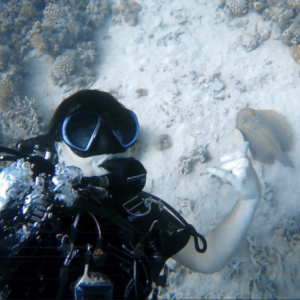
Uriah Rex | Divemaster Candidate
Salt water is my spirit of choice
